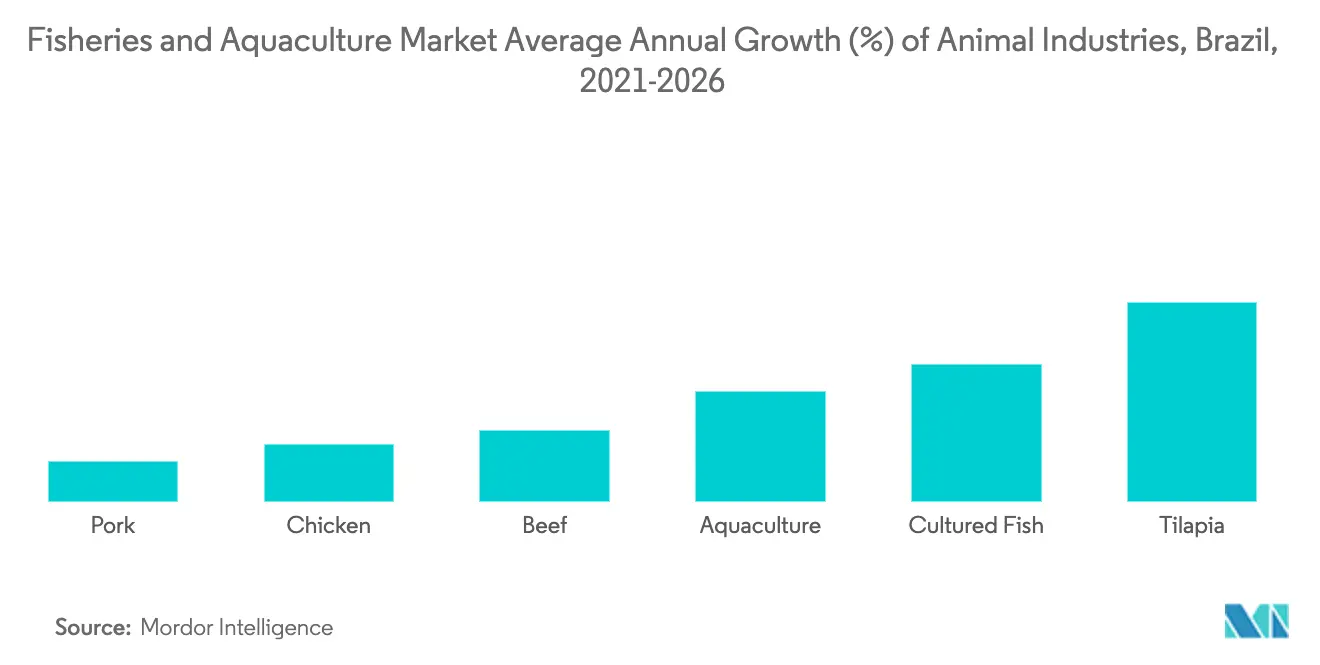Market Trends of Brazil Fisheries and Aquaculture Industry
This section covers the major market trends shaping the Brazil Fisheries & Aquaculture Market according to our research experts:
Growth in Seafood and Meat Consumption
Brazil is a major player in the aquaculture sector as well as seafood market regionally and globally. With increasing annual population of the country, it is the largest country in both South and Central America and the world's fifth-largest country, in terms of area and population. Currently, Brazil is the second largest aquaculture producer in the Latin American and Caribbean region. Currently, Brazil is the second largest aquaculture producer in the Latin American and Caribbean region. The growing opulation and the trend towards a healthy, high protein diet is leading to higher meat consumption which in turn is driving the market. While the country still depends on seafood imports to meet domestic demand, domestic aquaculture production may soon out compete imported seafood.
Brazil emerged as one of the potential countries for the expansion of the fisheries and aquaculture sector. Tilapia fishes are projected to register the fastest CAGR over the forecast period, followed by cultured fishes. The stakeholders in the value chain of fisheries and aquaculture are primarily focusing on fishing operations, like fish feed production, vaccines, medication, genetics, and supply of equipment and services.

Tilapia Dominates the Fishes Segment
According to the Brazilian Aquaculture Association (PeixeBR), tilapia fish accounts for 55.4% of the total domestic farmed fish output as of 2017. Furthermore, the country is ranked fourth, in terms of production of tilapia, following China, Indonesia, and Egypt.
Carps accounted for more than 70% of the non-native species. In the North and Northeast regions, native species and tilapia are the main cultured species, while in the South, Middle West and Southeast regions, tilapia, carp and catfish farms predominate. Polyculture farms utilising carp are present in almost every State and carp is currently the major fish species farmed in Brazil. A semi-intensive system using natural fertilization or integration with pig breading is a common culture pattern in the South region. The Brazilian aquaculture sector registered a growth of 4.5%, between 2016 and 2019.

